
TIPS AND RULES ON SLOPES
Learn the tips and rules that everyone should follow to enjoy skiing to the fullest in a safe way.
Tips before you start skiing
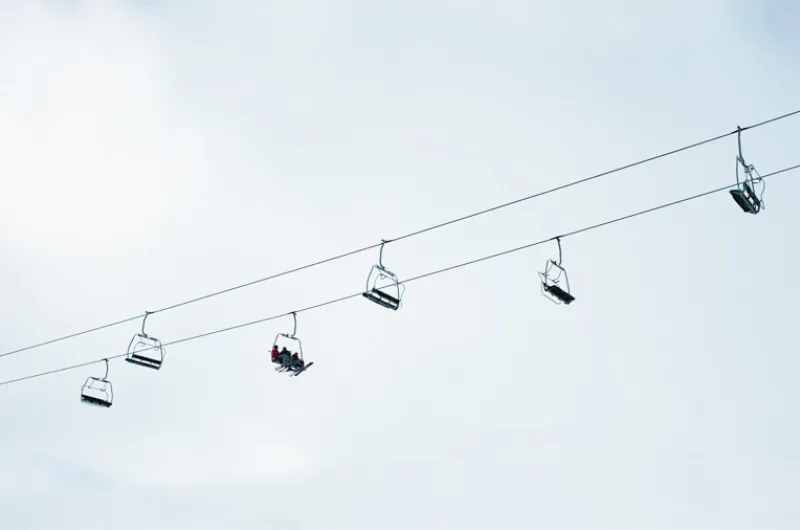
Find out before you hit the slopes
Check the weather forecast at the resort or on meteo.ad. We also recommend downloading the map through our official websites or app and taking into account the lift and slope schedules.
Warm up before you start
Skiing requires physical preparation. Do warm-up exercises before you start and stretch at the end of the day to reduce the risk of injury.
Stay hydrated and nourished
Have a complete and balanced breakfast. Don't forget to take breaks, drink water, and have hot beverages.
Wear thermal clothing and protective gear
Wear waterproof thermal clothing that suits the day's conditions. For beginner snowboarders, gloves with wrist protection are highly recommended, and back protectors (or "turtles") are advisable in snowparks for both skiers and snowboarders.
Wear a helmet and make sure children wear theirs.
Avoid head injuries in case of collision or fall. It is essential for children under 12 and highly recommended for everyone. Make sure it complies with the European standard EN1077 and bears the CE mark. Children under the age of 12 must ski under the supervision of a responsible adult and with all appropriate safety equipment.
Check the equipment and the binding adjustments
At the start of the season, make sure a professional checks the condition of your skis, edges, bases, and the binding adjustment according to your weight and skill level. If you rent the equipment, the shop will take care of it. This will help prevent possible knee injuries in case of an accident.
Always use sun protection
Snow reflects up to 85% of ultraviolet rays. Wear sunglasses or goggles with a sun filter (at least category 3 and with the CE mark) and don't forget to apply high-protection sunscreen and lip balm several times a day, even if it's not a sunny day.
Learn and improve your skiing level
Learn and improve your technique with certified instructors from the official schools of Andorra, the only ones authorized to teach lessons on the skiable areas. Also, always remember to ski on slopes that match your level.
Take out ski insurance
It will provide you with greater peace of mind and coverage in case of an accident. You can purchase it at the station's ticket office before you start skiing.
Learn and follow the rules of conduct on the slopes.
-

Respect others
Behave in a way that does not endanger or harm others on the slope.
-
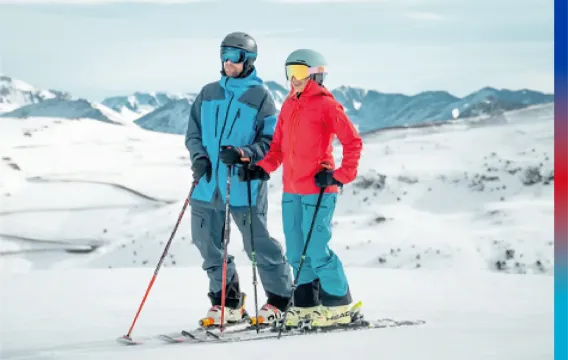
Control your speed
Adapt your speed and skiing or Snowboard style to your level, the terrain, the snow, the weather, and the number of people on the slopes.
-
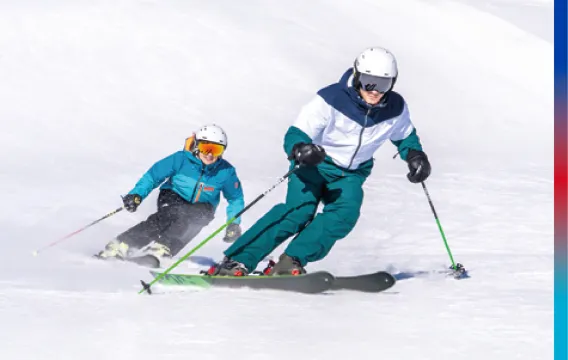
Choice of trajectory
The skier or snowboarder coming from behind must choose a path that does not pose a danger to those ahead.
-
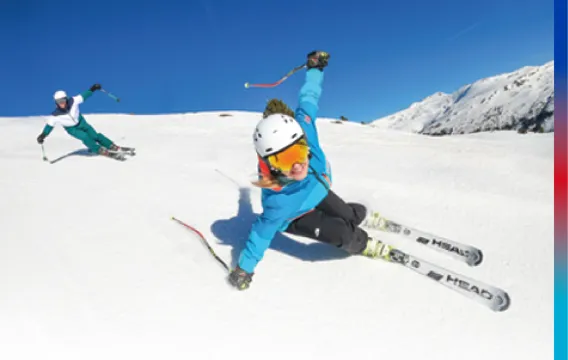
Overtaking
They can be done from above or below, from the right or from the left, always anticipating the movements of the person in front of you.
-
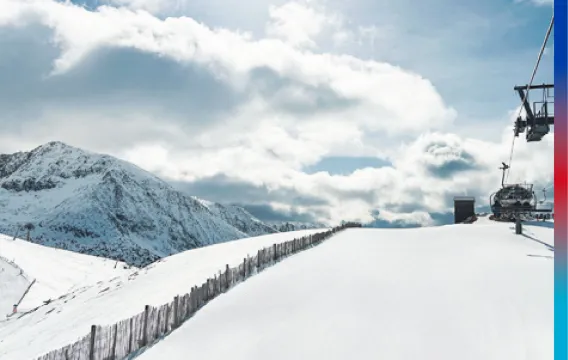
Entry and start on the slope
When joining a slope, starting after stopping, or ascending it, it is mandatory to check for safety by looking both uphill and downhill.
-

Stop on the slope
Avoid stopping in narrow areas or places with low visibility. In case of a fall, clear the slope as quickly as possible.
-
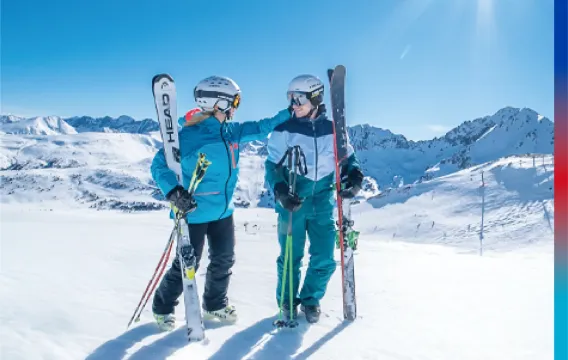
Ascent and descent on foot
If you walk up or down the slope, always stay to one side.
-
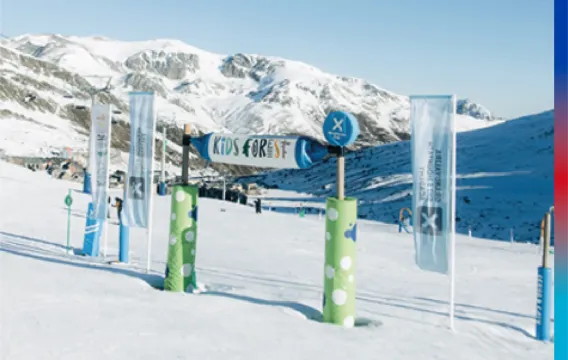
Respect for signs and warnings
Follow all the signs and warnings displayed throughout the resort.
-
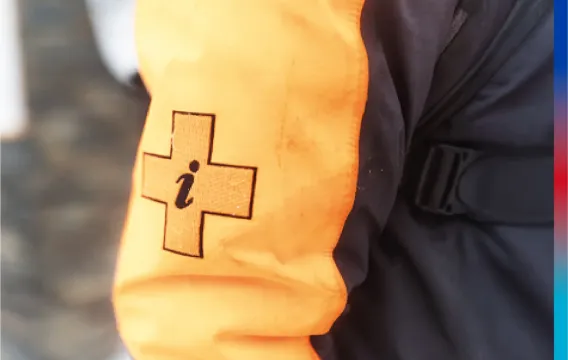
Assistance in case of an accident
If you witness an accident, offer help.
-
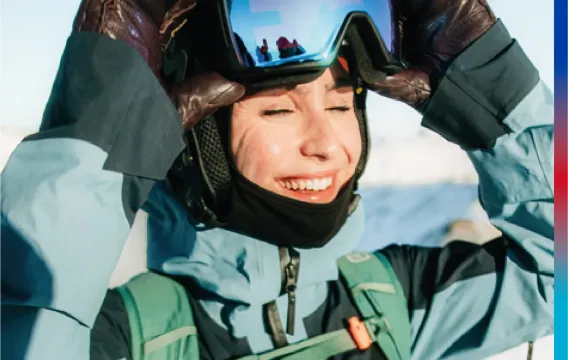
Identification
After an accident, identify yourself either as a participant or as a witness.
Specific safety rules in snowparks and off-piste areas
In addition to the rules mentioned above, there are specific rules within snowparks and for off-piste activities.
Freestyle areas and snowparks
Snowparks are specially designed areas for Freestyle practice and require the use of specific equipment, either for snowboarding or skiing. For safety reasons, access to snowparks with Snowblade® or Big Foot® type skis is not permitted.
- Follow the advice of the snowpark staff.
- Respect the signage. All snowparks have basic rules and usage regulations that you must know to ensure your own safety and that of others.
- Respect other users. Wait for your turn and keep a safe distance. Each module is to be used by only one person at a time.
- Before each jump, make sure the landing area is clear.
- Respect the stopping points. If you want to take photos or videos, stop on the side or in a safe spot, away from jumps and modules.
- If you fall, move away from the landing area as quickly as possible.
- Do not jump sideways from boxes or rails.
- Drones cannot be used without the resort’s permission.
- Choose your route or obstacles according to your skill level.
Off-piste
Only open slopes have boundaries, control, and signage. Outside of them, the responsibility for risks and dangers lies with the skier or snowboarder.
- Check the avalanche risk at www.meteo.ad and remember that if weather conditions are adverse, the wisest decision is to turn back.
- For safer practice, equip yourself with an avalanche transceiver (DVA), shovel, and probe.
- Never ski off-piste alone. Finding tracks is not a sign of safety and can lead to dangerous situations or places.
What to do in case of an accident
If you witness an accident on the slopes, it’s important to stay calm and act quickly and clearly.
- Assist the injured person, but do not move them. Stay with them until a professional arrives.
- Alert the resort’s rescue service. You can call the emergency number indicated on the resort’s markers or notify the nearest staff member. Try to provide as many details as possible about the victim and their location when giving the alert.
- Protect the injured person and mark the accident site by placing your skis in the snow in the shape of a cross.
Find out more about slope signage in case of an accident.
Safety rules for the resort’s ski lifts
At ski resorts, there are different types of lifts that make it easier to access the slopes: gondolas and cable cars, chairlifts, drag lifts, or conveyor belts. Each one requires attention and responsibility from users to ensure safe and smooth operation.
It is important to always follow the staff’s instructions and respect the boarding and disembarking rules. Before taking any lift, check which slopes it provides access to and their level of difficulty. In case of a stoppage of any mechanical lift, stay calm and wait until it resumes operation. Smoking and throwing objects on the lifts or in the boarding and disembarking areas are strictly prohibited.
Cable cars and gondolas
These lifts usually have a large transport capacity, allowing a high number of people to be moved efficiently.
- They are particularly suitable for pedestrians.
- Users must board without wearing skis or a snowboard; the equipment is placed either inside or on external racks, depending on the installation.
- During the journey, it is possible to remain seated or standing inside the cabin.
- Boarding and disembarking take place at a reduced speed to make it easier for users to enter and exit.
Chairlifts
- When boarding:
- Hold your poles in one hand.
- If you’re carrying a backpack, always wear it in front.
- Pay attention when getting on: a distraction can cause falls or loss of balance.
- If boarding is not done correctly, leave the chair as soon as possible to avoid higher-risk situations.
- Once seated, lower the safety bar.
- Children under 1.25 m tall must always be accompanied. It’s important that the child sits on the outer side so that the operator can assist.
- During the ride:
- Do not swing while on the chairlift.
- Stay seated with your back against the chair.
- When disembarking:
- Lift the safety bar at the place indicated by the signage — not before.
Ski-tow
- At the start:
- Before grabbing the drag bar, remember to remove your poles and hold them in one hand.
- During the ride:
- Do not release the drag bar before reaching the top, and do not grab a bar in line — you could derail the cable and injure yourself or other skiers going up.
- Slaloming along the drag lift line is strictly prohibited.
- In case of a fall, release the drag bar and move away from the lift line as quickly as possible.
- At the top:
- Release the drag bar at the designated area and move away quickly to avoid being hit by the next bar.
Mat
- Boarding and disembarking must take place in the designated areas.
- During the ride, walking, sitting, or lying down on the conveyor belt is not allowed.